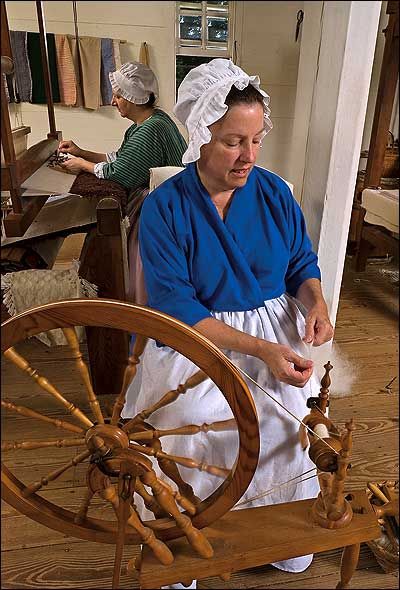American Revolution gravestone symbols preserve the story of an important chapter in US history, a war for independence from 1775 to 1783.
The American Revolution was fought over who had the authority to impose taxes – Britain or those governing Britain’s 13 colonies in America. The American colonists felt that taxation without representation in Britain’s government decisions was unfair. They also rebelled against the restriction of free trade and limitations on free speech.

In April of 1775, skirmishes between British troops and colonial militiamen ignited the armed conflict at Lexington and Concord. By the following summer, the rebels were waging a full-scale war for their independence.
In 1778, France entered the American Revolution siding with the colonists and turning what had essentially been a civil war into an international conflict.
After the French helped the Continental Army defeat the British at Yorktown, Virginia in 1781, the Americans had essentially won their independence, even though fighting did not officially end until 1783.
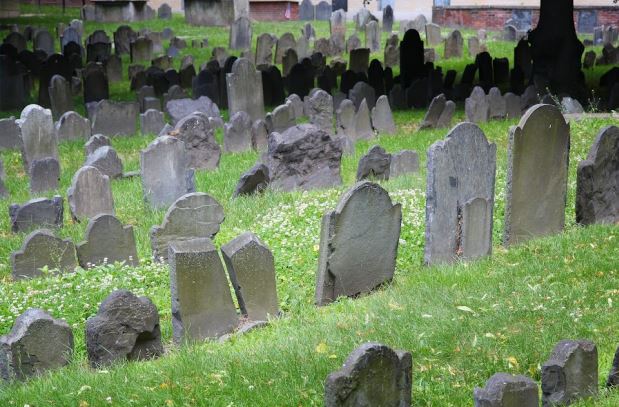
As in all wars, many died. Estimates of the number of colonists who died during the American Revolution range from 25,000 – 70,000. About 6,800 were killed in battle and at least 17,000 died from disease.
Early Marking of the Graves
On Memorial Day in 1892 in Acton, Massachusetts, simple wooden markers were placed next to the graves of those who were known to have taken part in the War for Independence.
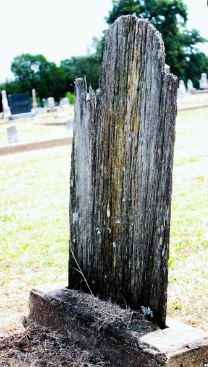
On the Fourth of July of the same year, similar markers were placed in nearby Stow, Massachusetts.

In February of 1893, the Massachusetts Society of Lexington also honored those who had served in the Revolutionary War by marking their graves with more permanent markers and placing tablets in town halls and libraries with the Patroits’ names.
Thomas Puffer, Soldier of the American Revolution

This is the gravestone and flag holder for American Revolutionary War soldier Thomas Puffer. Click HERE to see his gravestone in the American Revolutionary War Cemetery in Sudbury, Massachusetts on BillionGraves website. Then click on the “Nearby Graves” button on that page to see more gravestones in the American Revolutionary War Cemetery.
The top of the gravestone has a winged face, an adaptation of the popular 1700s winged skull motif. Click HERE for a blog post about winged skull gravestones.
Dump the Tea into the Sea
On December 16, 1773, about 100-150 colonists protested British rule by destroying 340 chests of East India Company tea.
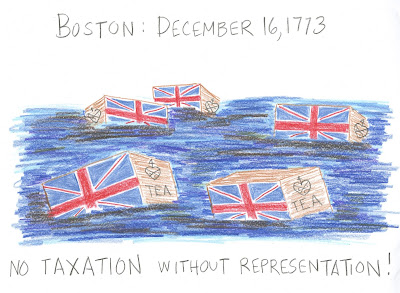
This act of defiance eventually came to be known as the “Boston Tea Party” and it launched the colonies toward Revolution. Photo Source
To honor the bravery and patriotism of The Boston Tea Party participants, a group of organizations worked together to place commemorative markers at each of their graves by 2023, the 250th anniversary of the event.
The group was led by The Boston Tea Party Ships & Museum and it included historical societies, museums, schools, and living history organizations. It was called the Boston Tea Party Participant Grave Marker Project.

The grave markers show the men dumping the chests of tea into the ocean, in a symbolic act of freedom and independence.
Click HERE to watch a video of a Boston Tea Party gravemarker placement ceremony, complete with a fife and drum corps, a musket-firing salute, and a hats-off “Huzzah!”.
Click HERE to learn more about military cemetery flag holders in a popular BillionGraves blog post.
The Daughters of Liberty
While the men were busy dumping their tea, the women gathered to spin. According to the book The American Revolution: A Concise History:
“Women took to their spinning wheels – what had been a chore for solitary women, spinning wool into yarn, weaving yarn into cloth, now became a public political act. Ninety-two ‘Daughters of Liberty’ brought their wheels to the meeting house in Newport, spending the day spinning together until they produced 170 skeins of yarn. Making and wearing homespun cloth became political acts of resistance.”
Daughters of the American Revolution
The Daughters of the American Revolution (DAR) is a women’s organization that was founded in 1890. Members are passionate about community service, preserving history, educating children, and promoting patriotism. When you see a DAR emblem on a gravestone, it means that the woman who was buried there was a member of the organization.
The only way to become a member of DAR is to be a direct bloodline descendant of an ancestor who aligned with the colonies to achieve independence from Britain during the American Revolutionary War. Today, there are more than 190,000 members of the DAR, with chapters around the world.
Symbols of the Daughters of the American Revolution
The main symbol on the DAR emblem is a spinning wheel with bundles of flax behind it.

Colonial women spent many hours each day sitting at their spinning wheels, spinning wool into flax into yarn. The yarn was then knitted into socks, scarves, sweaters, and shawls to keep their families warm.

Thus, the spinning wheel represents the industry, thrift, patience, and ingenuity of women in the thirteen colonies. But, as a DAR symbol, a spinning wheel was more than that.
Political Resistance
Colonial women used spinning and knitting as a form of political resistance. How? Well, you’ve heard the phrase, “taxation without representation”, right? It means the people were required to pay taxes to a government authority without being able to vote or help decide the government’s policies.

During the 1760s and 1770s, the British were charging taxes on the textile industry. So colonial women began making their own homespun clothing which allowed them to boycott the sale of British goods in the colonies.
Military Uniforms
Colonial women also spun yarn that could be knitted into hats and socks which they delivered to soldiers to be worn as a part of their uniforms.
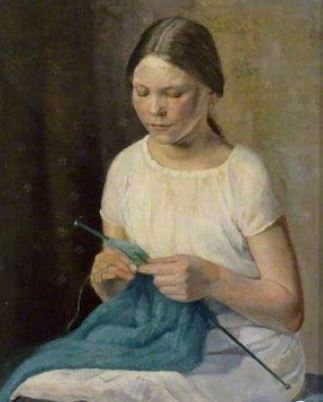
The socks or “stockings” came up over the soldier’s knees and it could take up to 40 hours to knit a pair. So knitting was a very common sight and nobody would think of it as a suspicious activity. Little did they know . . .
Spinning Spies
Another reason that the DAR uses a spinning wheel as a symbol has to do with military spying.
During the American Revolution, the British troops were making themselves right at home. Literally. And the colonists didn’t much like it. In 1765, the British passed the Quartering Act which required the colonists to provide housing for the British soldiers in barracks. If barracks were not available, the soldiers were to be housed in barns, inns, ale houses, and even in the colonist’s private homes.
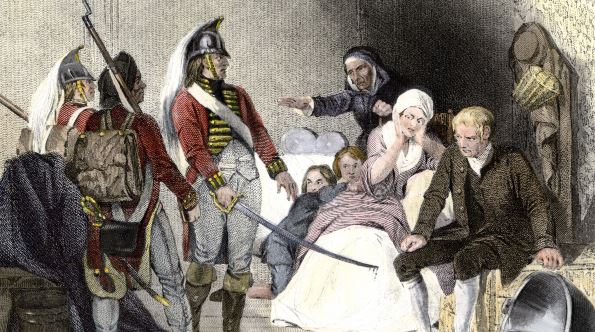
When the British soldiers were quartered in homes, they did not allow the men of the house to enter the dining area where they held their planning meetings. However, the women were allowed to enter when they served food.
Sometimes the women spied on the British who were quartered in their homes. One dissatisfied rebel was Molly Rinker of Philadelphia, Pennsylvania. She listened closely to the British soldier’s conversations. She wrote their secrets on slips of paper and wrapped them around a stone. Then she wound her homespun yarn around the stone until she had what appeared to be a typical ball of yarn.

Molly then took the yarn ball with her to a rock overlooking a forest. She sat on the rock to knit until she dropped the ball of yarn into the woods below without drawing any attention to herself. One of George Washington’s soldiers rode by and scooped up the ball of yarn to unravel the British military secrets.
The Number 13
The rest of the symbolism on the DAR gravestone emblem is pretty straightforward. The 13 spokes on the spinning wheel, and the 13 stars around the circle, represent the unity of the 13 colonies.
DAR Emblems
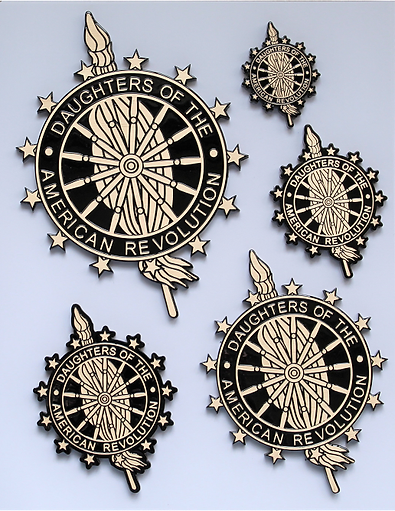
DAR emblems come in a variety of sizes and in addition to being placed on gravestones, they may also be placed on urns and caskets.
Grave Marker for a Daughter of American Revolutionary War Soldier
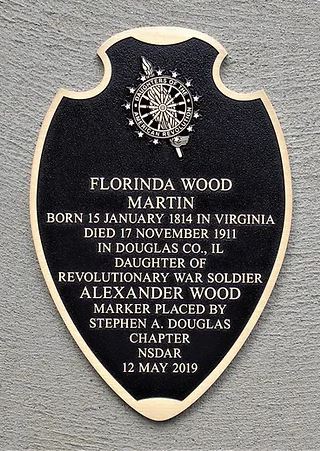
If a woman was literally the daughter of a Revolutionary War soldier , they may have a “Daughter Grave Marker” placed on their gravestone.
Real Daughter Grave Markers
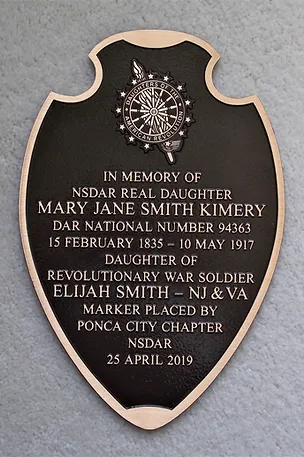
If a woman was literally the daughter of a Revolutionary War soldier and ALSO a member of the DAR, they may have a “Real Daughter Grave Marker” placed on their gravestone. There are 767 “Real Daughters” in America.
Matching Veteran Grave Marker
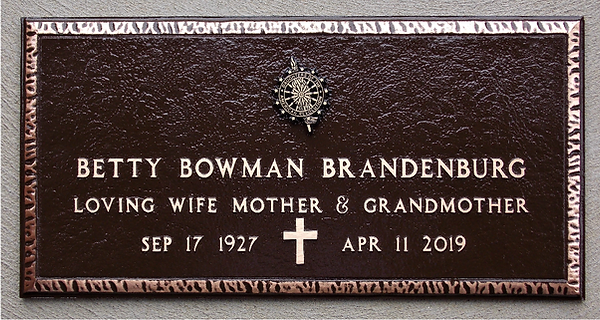
A woman who was the wife or mother of an American Revolutionary War Veteran may have a matching grave marker placed at their final resting place.
Revolutionary War Soldier DAR Marker
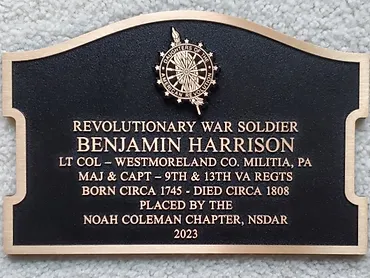
DAR members have placed thousands of markers at the gravesites of Revolutionary War soldiers, patriots, and their wives, daughters, and Real Daughters.
Sons of the American Revolution
The National Society of the Sons of the American Revolution has similar objectives to the Daughters of the American Revolution. Their stated mission is to “honor our Revolutionary War patriot ancestors by promoting patriotism, serving our communities, educating and inspiring future generations about the founding principles of our Country”.
Membership in the Sons of the American Revolution
Any male 18 years or older-regardless of race, religion, or ethnic background who can prove bloodline descent from a patriot of the American Revolution, is eligible for membership. The SAR allows DNA results to be used to prove descent for those with unclear roots.
Mission of the Sons of the American Revolution
The Sons of the American Revolution (SAR) was founded in 1889 and is headquartered in Louisville, Kentucky. These are some of the ways members serve:
- Assisting Veterans
- Providing school teachers with living history interpreters, lesson planning materials
- Hosting reenactment events for school-aged youth

Grave Marker Symbolism
When it came time for the SAR to choose an emblem for their grave markers, their thoughts naturally turned to France. During the American Revolution, France was a key ally of the American colonies. France provided indispensable aid to the Continental Army in the form of supplies and troops.
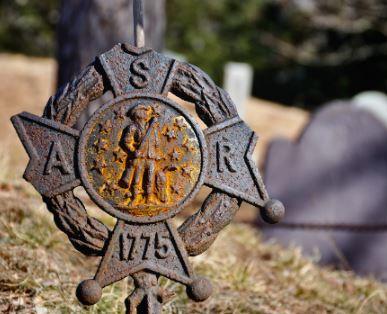
Led by Louis XVI, France provided arms, uniforms, 63 warships, and millions of livres in cash and credit. France also sent 22,000 sailors, and 12,000 soldiers to support the American Revolution.
A French Cross

So the design that was chosen for the SAR grave markers included a cross with eight points patterned after the cross used by the the ancient chivalric Order of St. Louis, founded by Louis XIV in 1693.
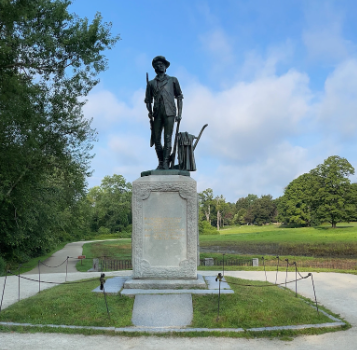
In the center of the grave marker, is a replica of Daniel Chester French’s statue The Minute Man, which stands by the Concord Bridge.
Laurel Wreath
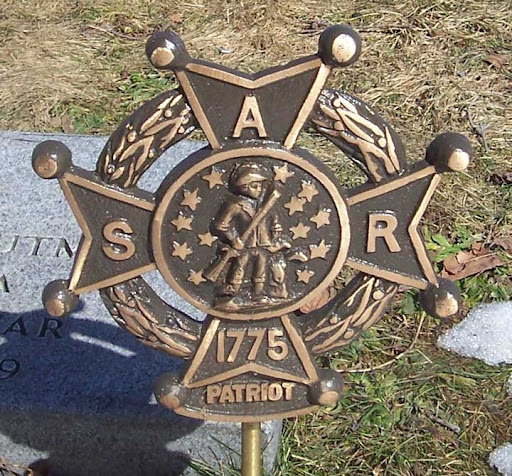
The SAR design surrounds the cross with the laurel wreath of victory. The laurel wreath is derived from another French order, the Legion of Honour which was established by Napoleon.
Napoleon’s order differed from the old royal orders which rewarded inherited or conferred nobility. The Legion of Honour was awarded based on personal merit rather than birthright. For this reason, the SAR insignia was purposely modeled after the Legion of Honour badge.
Although the cross was patterned after the French design, the original meaning was to remind cemetery visitors of the sacrifice of the crucifixion of Jesus Christ on a cross. Click HERE to learn more about the meaning of cemetery crosses.
Like the DAR grave marker, the SAR has 13 stars representing the unity of the 13 colonies.
1776 Grave Marker Placed After 1865
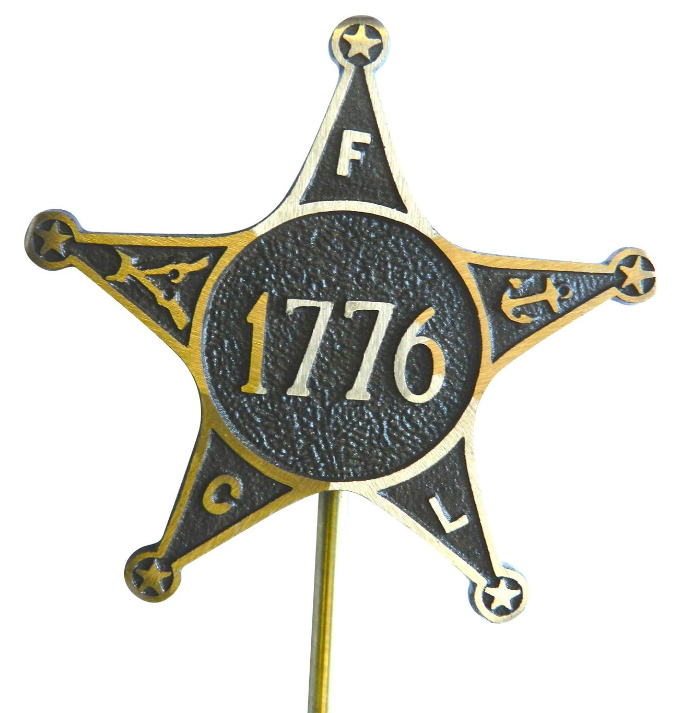
The two symbols on this grave marker are an anchor which was for sailors and crossed rifles which were for land forces.
This Revolutionary War cast bronze grave marker may have the year 1776 on it, but it was created much later. The letters “FCL” stand for “Fraternity, Charity and Loyalty”, the three guiding principles of the Grand Army of the Republic (GAR), which was a fraternal organization for Veterans of the Union Army who served in the American Civil War in 1861 – 1865.
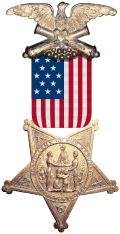
Veterans of the Civil War who wanted to honor those who had served in the War of Independence originally placed this type of marker. It was designed to look similar to the GAR Medal of Honor.
From a Lost Boy to a Giant Soldier
One of the more well-known soldiers of the American Revolution was Peter Francisco, also known as the “Giant of the Revolution” or the “Virginia Hercules”.

In 1765, when Francisco was about five years old, he was found wandering on the seaside docks at City Point, Virginia. He didn’t speak any English and just kept repeating the name “Pedro Francisco” so the locals called him Peter.
Peter was taken to the Prince George County Poorhouse. There, it was discovered that he spoke Portuguese and it seemed that he was from a well-to-do family because his clothing was of high quality.
When Peter learned to speak English, he said that he had lived in a mansion near the ocean. His mother spoke French and his father spoke another language that he did not understand.
He and his sister had been kidnapped from their home. His sister escaped but Peter was bound and taken to a ship. Historians believe the kidnappers may have intended to hold the children for ransom or sell them as indentured servants in North America, but changed their minds. One legend says the Francisco family had many political enemies and set up Peter’s abduction for his own protection.
Peter was taken in by Judge Anthony Winston, an uncle of Patrick Henry. He was cared for and tutored by the judge and his wife.
When Peter was old enough to work, he was apprenticed as a blacksmith. an occupation chosen because of his massive size and strength. Peter eventually grew to be six feet and eight inches tall (203 centimeters) and weighed 260 pounds (118 kilograms). A man of his size was exceptionally large at the time.
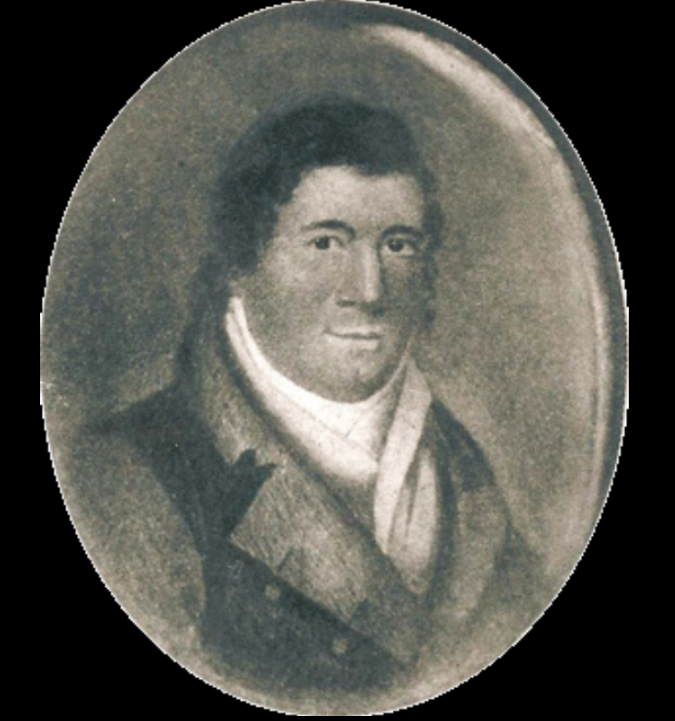
Peter lived with the Winston family until the beginning of the American Revolution.

The stories that could be told about Peter’s amazing feats during the war could fill volumes. He took part in General “Mad” Anthony Wayne‘s attack on the British Stony Point Fort on the Hudson River. He was the second soldier to enter the fort.
During the attack, Peter incurred a nine-inch gash in his stomach but he continued to fight. He killed twelve British soldiers and captured the enemy flag. Francisco’s entry into the fort is mentioned in Wayne’s 1779 report on the battle to General George Washington. As a reward for being the second man to enter the fort, Peter received 200 dollars.
After the Battle of Camden in South Carolina, Peter noticed that one of the valuable American cannons was stuck in the mud and was being left behind. Legend says he picked up the 1,100-pound cannon and carried it on his shoulder to keep it from falling into the hands of the enemy.
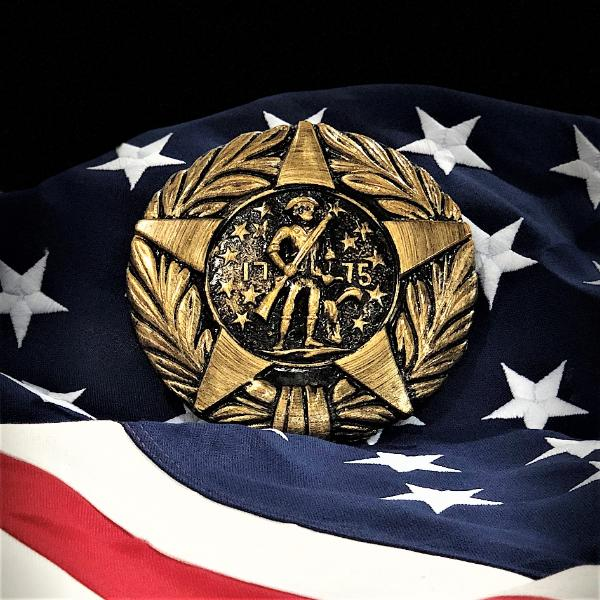
Peter died of appendicitis, long after the war, on January 16, 1831, and was buried with full military honors in Shockoe Hill Cemetery in Richmond. The Virginia state legislature was adjourned for the day and many legislators attended his funeral.

In 1975, Peter Francisco was commemorated on a stamp by the US Postal Service in its “Contributors to the Cause” Bicentennial series. The image portrays his saving the cannon at Camden.
Click HERE to see more photos and information about Peter Francisco on the BillionGraves website.
Tomb of the Unknown Revolutionary War Soldier
The Tomb of the Unknown Revolutionary War Soldier, also known as the Tomb of the Unknown Soldier of the American Revolution, is a war memorial at Washington Square in Philadelphia, Pennsylvania.

The purpose of the memorial is to recognize the thousands of soldiers who served and died during the American Revolutionary War. Many of them were buried in mass graves in the square. The bronze statue at the center is of General George Washington.
The tomb includes remains from the surrounding area that were disinterred for archeological examination. The remains are that of a soldier, but it is unknown whether he was Colonial or British.
These words are engraved on the monument:
- “Freedom is a light for which many men have died in darkness”
- “The independence and liberty you possess are the work of joint councils and joint efforts of common dangers, suffering, and success.” (Washington Farewell Address, Sept. 17, 1796)
- “In unmarked graves within this square lie thousands of unknown soldiers of Washington’s Army who died of wounds and sickness during the Revolutionary War.”
- “Beneath this stone rests a soldier of Washington’s army who died to give you liberty.”
Volunteer
When you take photos in your own local cemeteries and I take them in mine, we will all help each other to find our ancestor’s final resting places. Every time a photo is taken with the BillionGraves app, the GPS coordinates are added.
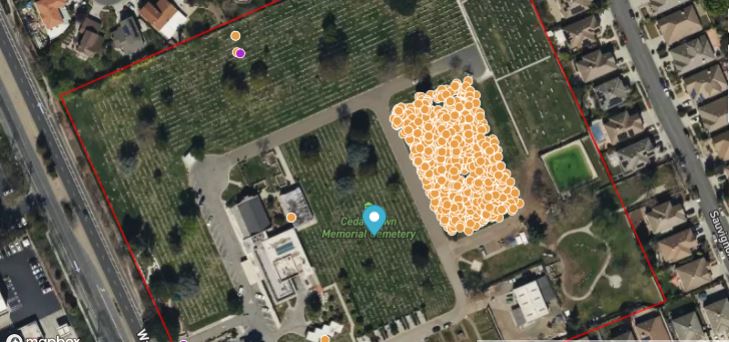
Click HERE to get started. You are welcome to do this at your own convenience, no permission from us is needed. If you still have questions after you have clicked on the link to get started, email us at: Volunteer@BillionGraves.com.
Happy Cemetery Hopping!
Cathy Wallace


